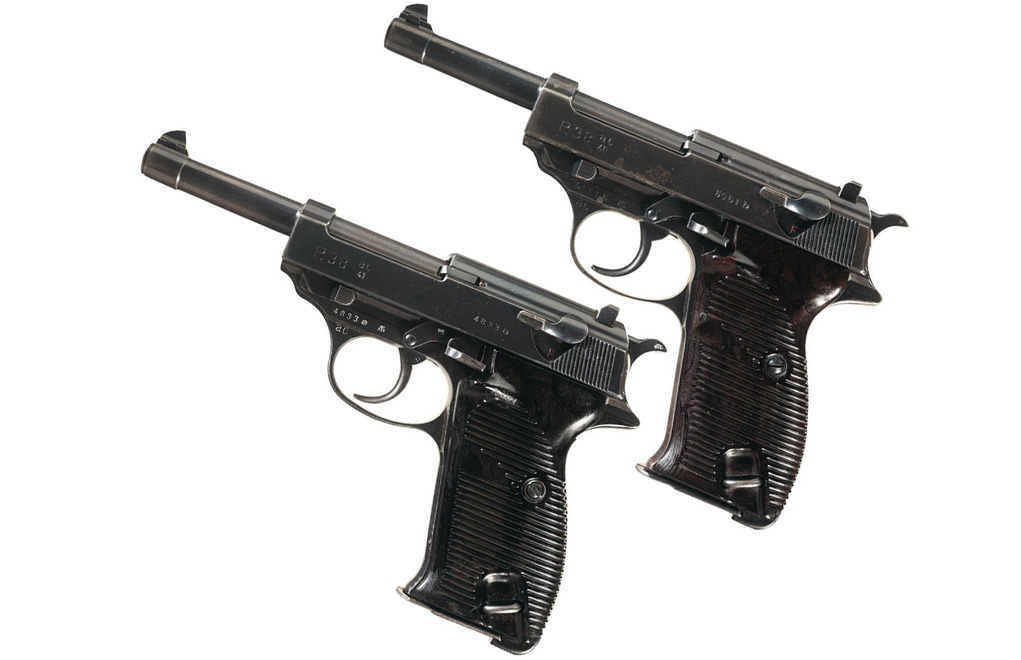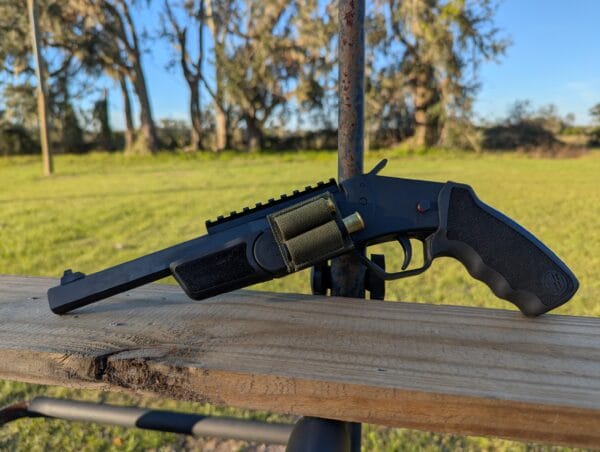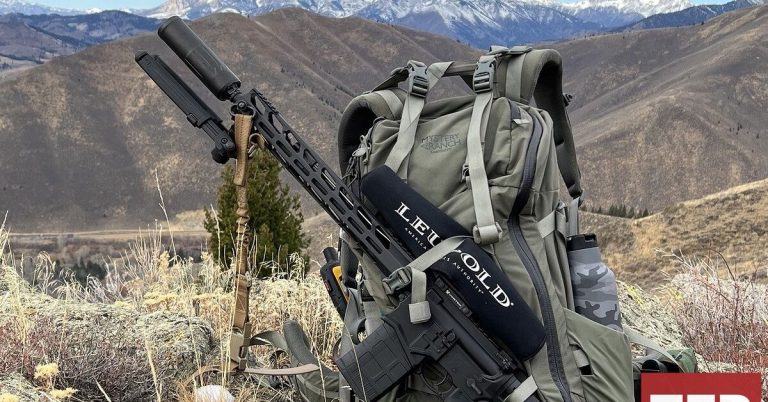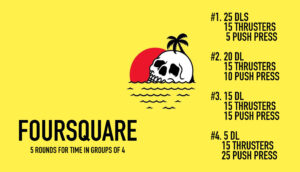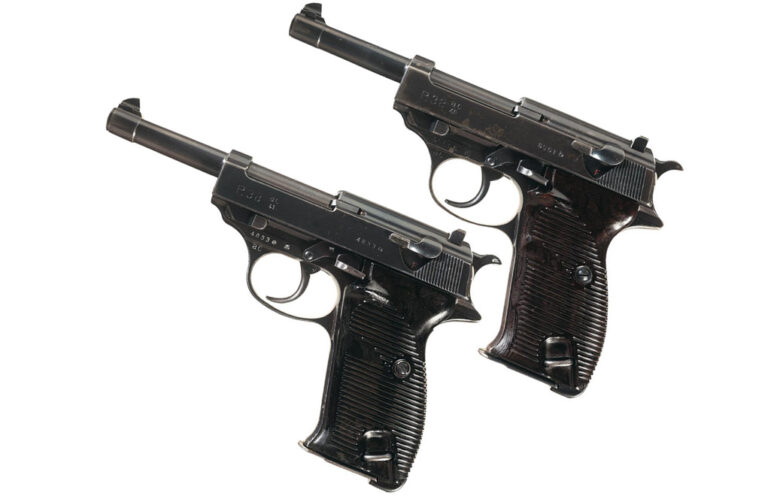
If you’re a fan of double-action/single-action 9mm service pistols, you owe a lot to the Walther P38.
The Walther P38 was the Wehrmacht’s less expensive replacement for the iconic P08 Luger pistol. The P08 was reliable and well-liked by the German Army, so you might assume that a cheaper gun would suffer from lower reliability or generally worse construction. Of course, this wasn’t the case.
While Walther may have primarily set out to design a pistol that would be cheap and efficient to mass-produce, the company ended up developing what would become one of the most influential handguns of the 20th century.
Not only did the Walther P38’s construction utilize manufacturing techniques that were then considered nontraditional, like a stamped steel slide cover and polymer grips, but also innovative features like a double-action/single-action trigger, a decocking safety lever, a loaded chambered indicator and large combat sights. These would soon become incredibly common features on pistols following WWII. Between that period and the advent of polymer-framed striker-fired pistols, DA/SA hammer-fired guns reigned supreme, and the Walther P38 was the first of that description to be adopted as a standard military sidearm.
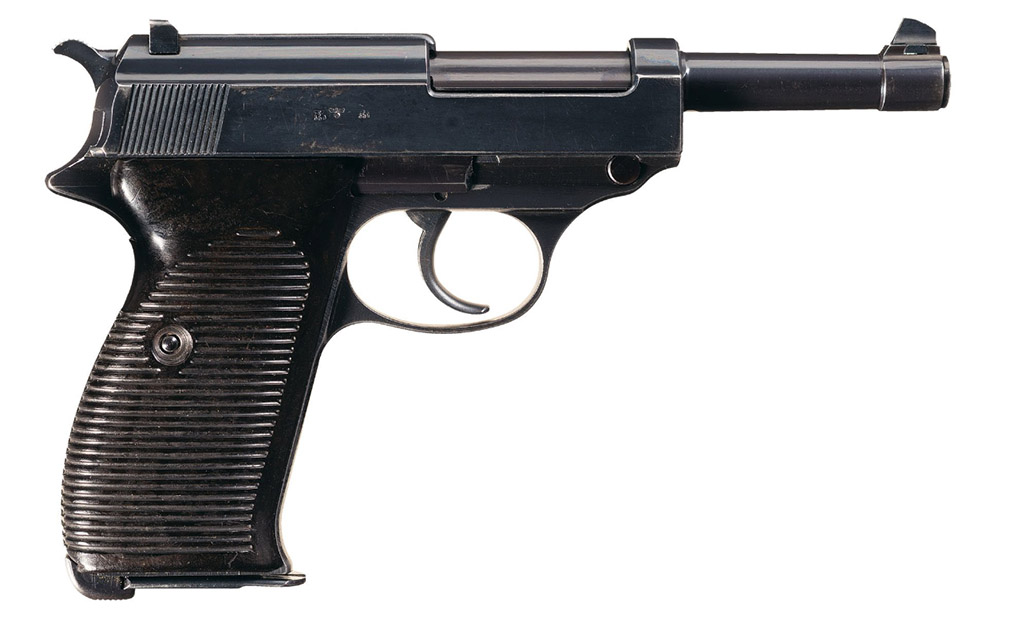
Even today, plenty of Walther P38s are still in use, and all things considered they remain quite an effective choice compared to many other surplus military pistols of its era. There are obviously more modern options available now, but the P38 continues to see use around the world along with more modern pistols that were heavily inspired by it.
Walther PP On Steroids
Development of the Walther P38 took about six years and started in 1932 when the German Army began looking for a replacement for the P08. The Luger is a machinist’s nightmare, featuring metal parts that need to be hand-fitted. This results in more time spent producing the pistols, making each one more costly in terms of both money and time efficiency.
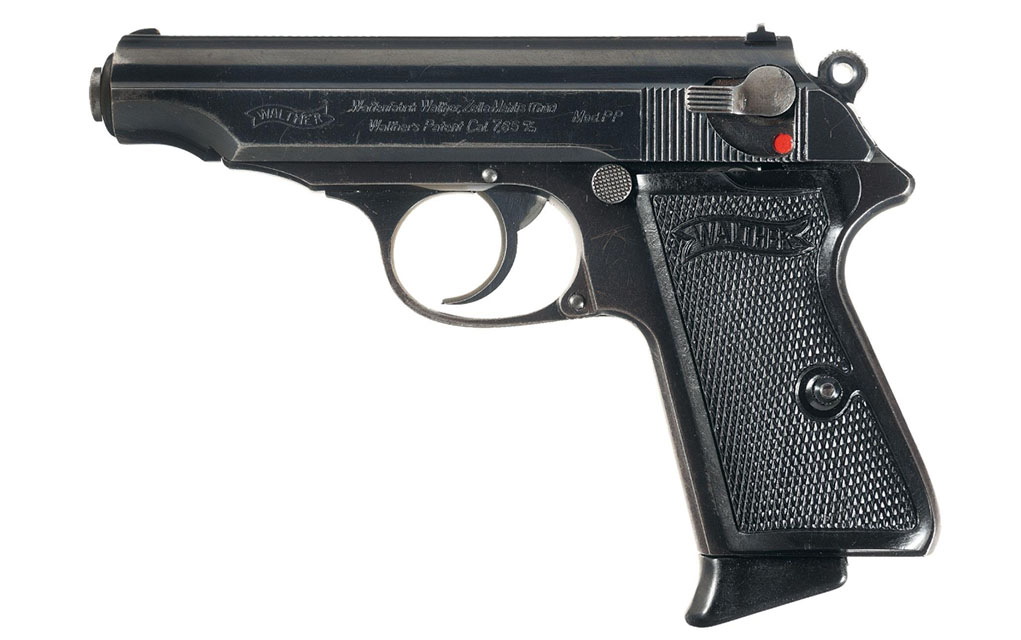
Walther introduced the PP (Police Pistol) in 1929 and it almost immediately became one of the most popular handgun choices for European law enforcement, both inside and outside of Germany. The PP itself was an influential design and was the first truly commercially successful double-action pistol produced. The PP used a simple straight blowback action, a double-action/single-action trigger and a decocking safety lever located on the slide. The German Army liked the 9x19mm cartridge, so Walther figured it would just scale the PP up to 9mm and everything would be wunderbar for the Wehrmacht.
The PP is chambered for .32 Auto or 7.65mm Browning as it is called in Europe. Walther super-sized the PP and called it the MP/PP, a gun that was nearly identical to the PP but chambered for the larger 9x19mm cartridge. While the idea sounded good on paper, in practice, the 9mm cartridge was too powerful for a simple blowback mechanism.
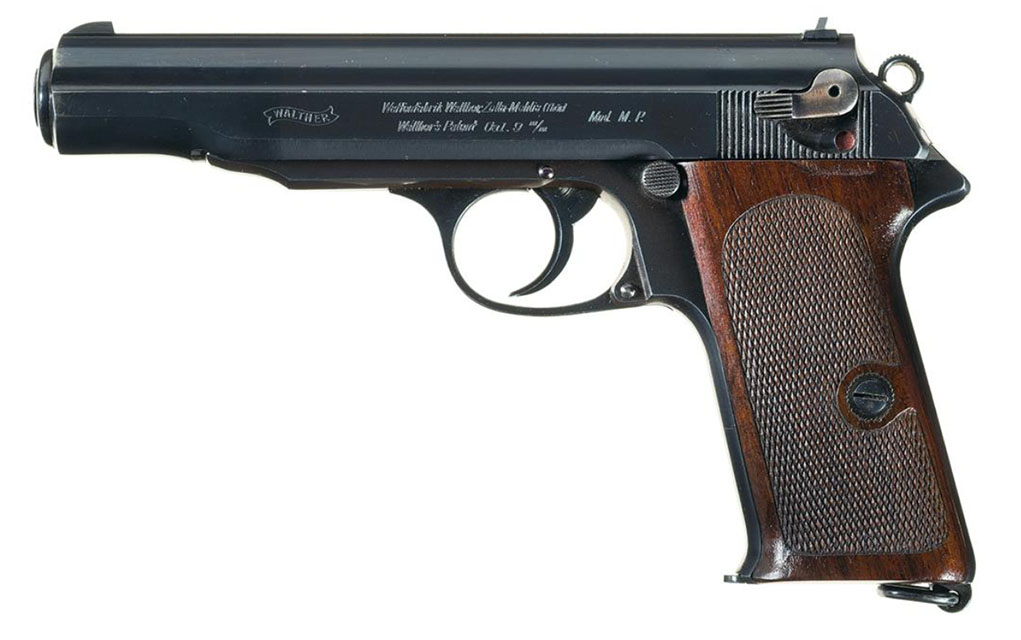
More P38 Prototypes, More Changes
The next design was also called the MP or Military Pistol, but it used an entirely different mechanism in the form of a locked breech, a system that was much better suited for the powerful 9mm cartridge. Features included a shrouded hammer, an open bridge slide design and an extractor located on its top. Only a handful were built because the slide tended to jump off the frame when fired. Not a desirable trait.
It was back to the drawing board for Walther, and by about 1935 the design had evolved and now featured a bridge on the front of the slide to keep it from jumping out of the rails. This model was called the Armee-Pistole or Army Pistol, but collectors refer to it as the AP following the naming convention Walther used previously. The AP used a similar mechanism to the previous MP. Some features of both the MP and the AP eventually made their way into the P38 design such as the slide stop and take down lever. Since the AP was again more of a research and development gun, very few were produced. The AP still didn’t cut the mustard as far as the German Army was concerned, so work on the design continued.
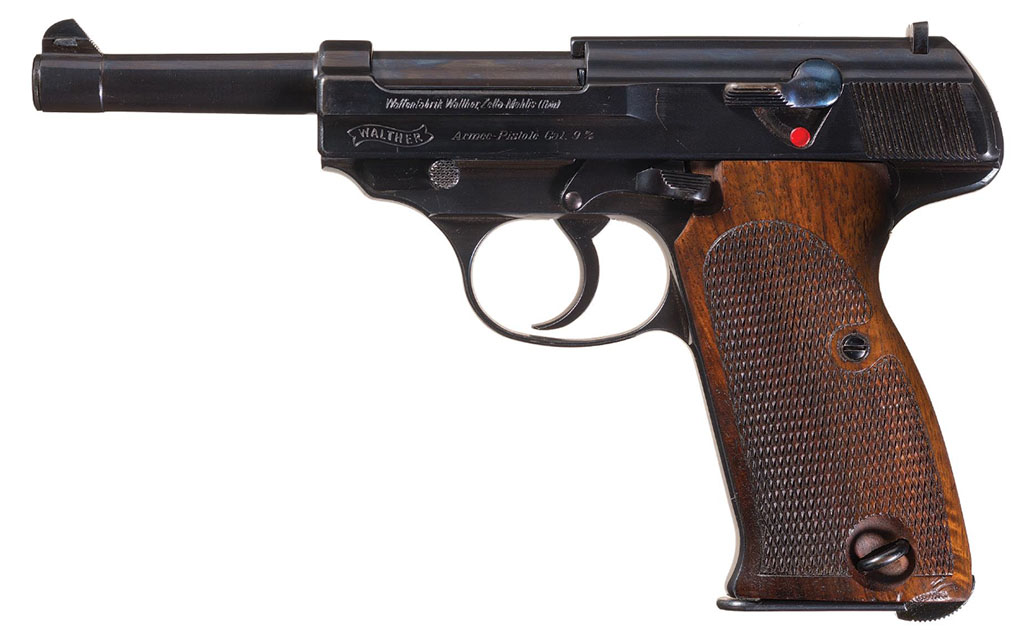
The next revision reverted to the MP nomenclature and changed the shrouded, enclosed hammer to an exposed, round hammer. The extractor was moved to the left side of the slide giving the new and improved MP that characteristic flat-sided slide found on the final Walther P38. At this point, the design was almost completed.
Commercially Known As The HP
The HP or Heerespistole was the next and final iteration. This model incorporated a spur hammer instead of a rounded hammer, and the extractor on the HP was now exposed instead of hidden under the slide like on the second model MP. The polymer grips fit together to form the rear backstrap which saved on the steel for the frame. The HP was the first pistol of this line to become available for commercial sales and military markets, and it would soon be tested by the German Army and quickly adopted and formally renamed the P38 in 1938. Sweden adopted the HP as the M39 pistol in 1939 as well. Some 24,000 to 30,000 HP pistols were sold on the commercial market before World War II broke out and Walther shifted all production to military needs.
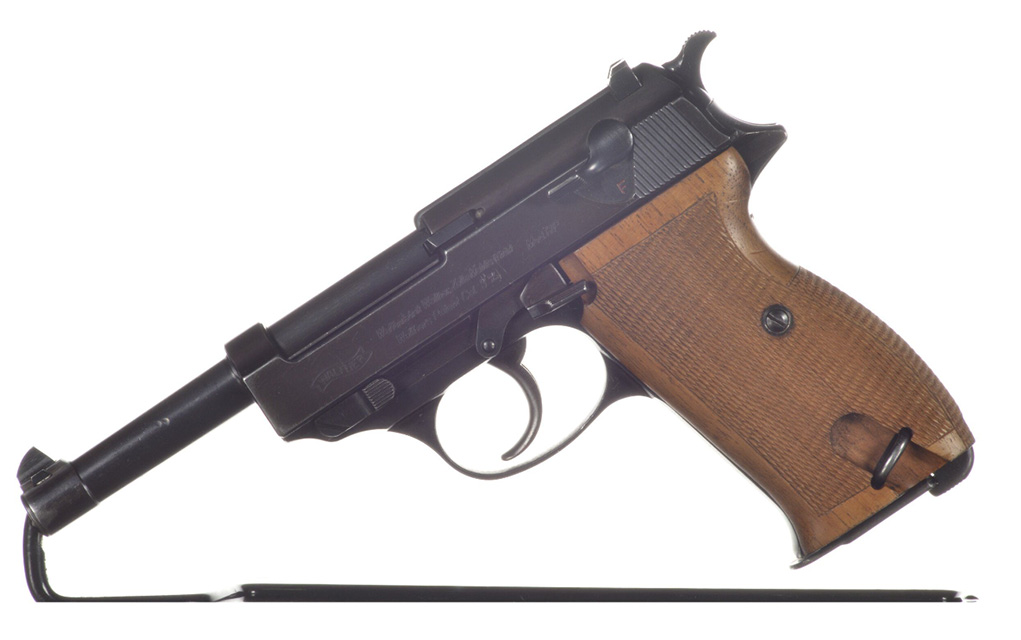
The mechanisms of the HP and P38 pistols are identical. They are virtually the same gun aside from their roll marks and a few minor differences like grip material. That said, the P38 would feature multiple different grip styles over its production life.
How Does The Walther P38 Work?
When the P38 is fired, a wedge-shaped falling block keeps the slide and barrel locked together until enough pressure has dissipated to allow the slide to reciprocate safely rearward. The locking block stops barrel movement and allows the slide to continue rearward to eject the empty case and cock back the hammer. Dual recoil springs return the slide forward to chamber a round. This system is different than most other pistol designs today which typically use a Browning tilting barrel action.
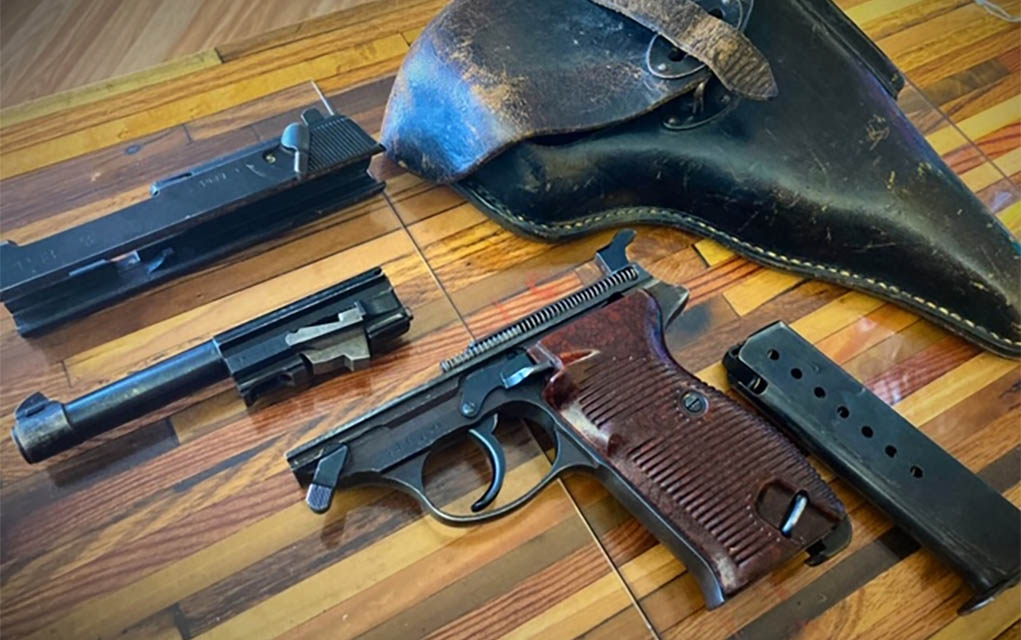
The 9mm P38 feeds from an 8-round single-stack magazine. Unique to the P38 at the time was a loaded chamber indicator. A metal pin protrudes from the rear of the slide when a round is chambered, providing both visible and tactile indications. The decocker safety located on the slide allows the user to decock the hammer and safely carry it with a round in the chamber.
Another important feature of the Walther P38 is of course its double-action/single-action trigger. While this became an incredibly common attribute of military handguns post-WWII, it was the first widely issued service pistol to include it. The pistol’s sights were very ahead of their time as well. Larger than average and offering a good sight picture, they’re definitely faster to use than most tiny military handgun irons of the era. The magazine release is located on the butt of the grip and the left grip has a metal loop to attach a lanyard.
Wartime P38 Production
By the end of WWII, over one million P38 pistols had been manufactured. While Walther had the highest output, it was not the only factory to make them as Mauser and Spreewerk were contracted to do so as well.

During the war, manufacturers were assigned codes to confuse the Allies where production was located. Walther produced the initial run of pistols using the Walther logo from 1937 to about mid-1940, at which time Walther switched to its military “480” identification marking during production from mid-1940 through October of 1942. After, Walther used the code “ac” until the end of the war. Mauser used the code “byf” and Spreewerk used the code “cyg”, although there were some other codes used near the end of the war as well. The codes are roll marked on the left side of the slide, and on Walthers and Mausers this was usually followed by the year of production. This means that a pistol marked with “byf 43” is a Mauser made in 1943. If trying to identify a P38 yourself, there are more detailed guides available in books and online that will cover the nuances and caveats not mentioned here.
Postwar WWII P38 Production And Variants
After the war, West Germany’s Bundeswehr geared up again with the P38 after Walther retooled and rebuilt the factory out of the rubble of WWII. Postwar P38 production ran from 1957 to 1963.
In 1963, Walther launched the P1 model which replaced the steel frame with an aluminum one and introduced a few other small changes. Commercial P1 guns were produced in 9mm as well as .30 Luger and .22 Long Rifle, and they were also manufactured by Manurhin in France under license. Amazingly, Germany did not start replacing its P1s until the 1990s, a testament to the original design that let it remain in service as a viable military sidearm for nearly six decades.
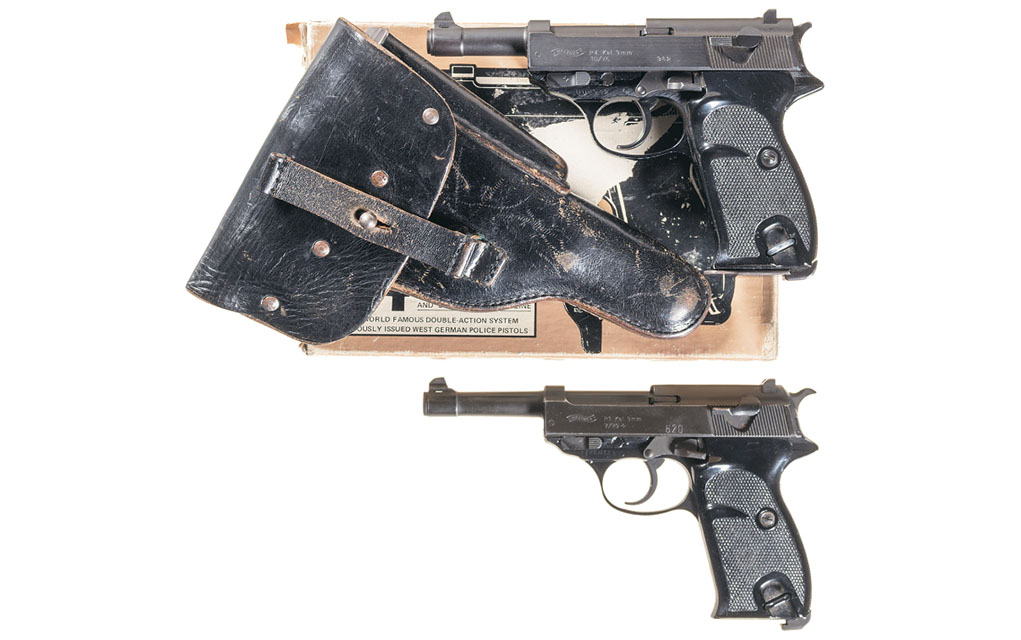
A P4 variant was produced in the late 1970s with a shorter 4.5-inch barrel and several other minor improvements. This gun was issued to various German law enforcement agencies, but it was only created as a stopgap measure and produced in relatively small numbers as the more advanced Walther P5 was already in development.
One rare and unique variant of the P38 worth mentioning is the P38K, which features an abbreviated, snub-nose barrel with the front sight attached to the bridge of the slide. The “K” in the model names is an abbreviation of the German word “kurz” which translates to short. Walther used the same naming convention for the PPK, the smaller version of the PP.

The P38 In Action
Not only did the Wehrmacht use the P38 on all fronts during WWII, but it was also issued to the Gestapo and many units of the SS. The P38 performed well and was extremely popular with troops. Not only was the P38 reliable and more rugged than the P08 it replaced, but it was much easier to disassemble and maintain. What the P38 lacked in sleek looks, it made up for in performance. American GIs were not familiar with a pistol like the P38, as the double-action/single-action trigger was odd and foreign compared to the revolvers and single-action 1911s they were accustomed to.
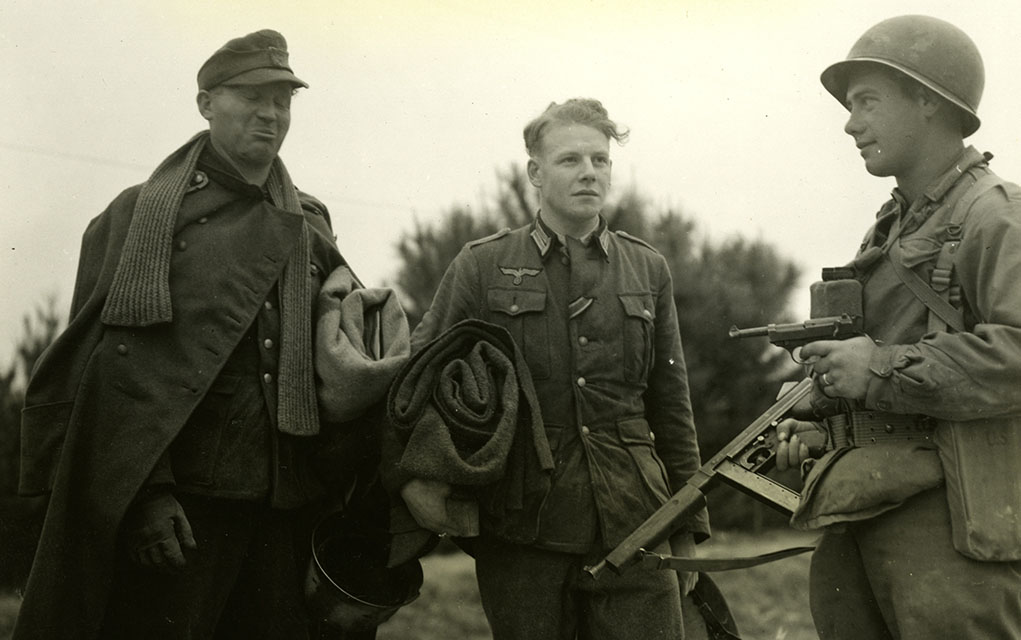
Dozens of different countries would go on to use the P38 after WWII, resulting in the pistol seeing action in several of the conflicts that followed. American soldiers in Vietnam would encounter the P38 as captured guns were given to the North by the Soviet Union as military aid, and the pistol showed up in many conflicts in the Middle East as well.
Collecting the P38
GIs returning home from WWII brought back battlefield pick-up P38s as souvenirs. These guns have no importation marks and have a higher value than guns that do have import marks. If you plan on collecting P38s from WWII, you’ll typically find pistols that are very well-worn or nicer examples that were refinished by the Soviet Union after being captured. That said, the few out there that still have their original finish in excellent condition can fetch a very pretty penny. The finish on wartime production guns is usually lower than the quality of pre- and post-war guns, and quality worsened as the war went on. P38s from 1940 will have been made with a lot more care than what Germany could afford by 1945.
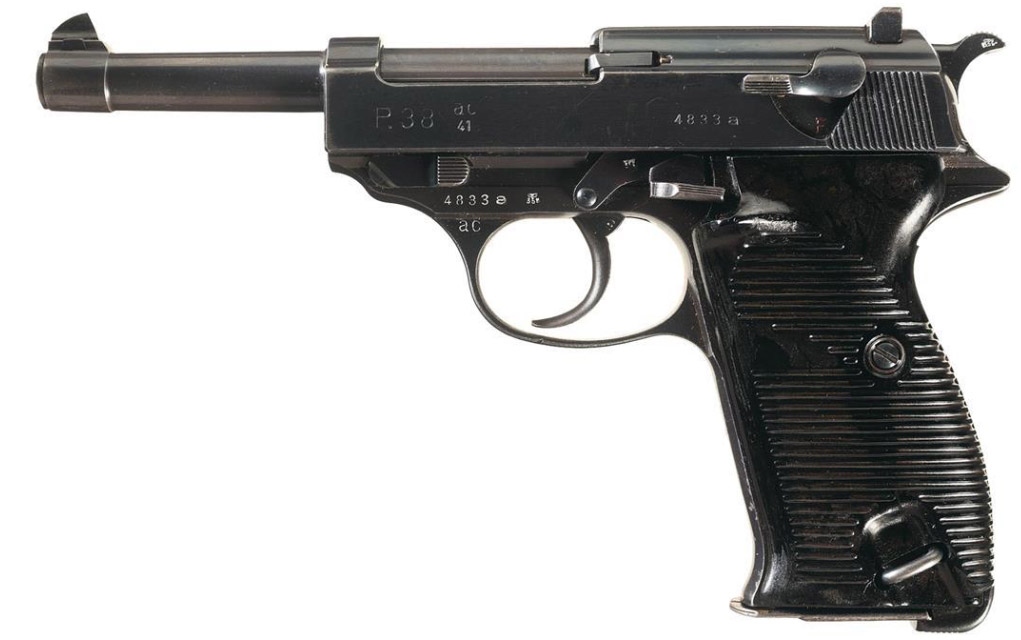
There are many very wealthy collectors out there with an interest in WWII German firearms, so original P38s naturally fetch incredibly high prices. Value depends on factors like the manufacturer, condition, rarity and provenance, but regardless, you should be prepared to pay over $1,000 if you’re interested in even an average example of WWII vintage. If you’re looking for a shooter rather than a safe queen, look for mismatched serial numbers or just consider buying one that was produced after the war.
Surplus P38s
After WWII, large quantities of P38s were captured by Soviet troops and shipped back to Soviet arsenals for refinishing. In the late 1990s and early 2000s, many Soviet-captured P38s were dumped onto the U.S. commercial surplus market. Most of these pistols have been refinished and have mismatched serial numbers, and they often have “X” marks over the old serial number and other German markings like swastikas removed or stamped over. Beware if a WWII P38 looks too pristine at first glance because there’s a good chance it’s a refurb and not in original condition. With that in mind, even a Soviet-captured refinished P38 will be more valuable to collectors than one produced after the war’s end.

By comparison, P1 variants are widely available on the surplus market. Many of these guns were used by European law enforcement before being imported into the U.S. These do not have nearly the value of wartime P38s, and you can still routinely find them for $500 to $800. Some even come with a surplus holster and extra magazines. I picked up a P1 for a song a few years back, but like all surplus, prices rise as supplies dry. If you want one, buying sooner is better than later.
The P38 Lives On
Many of the features of the Walther P38 would go on to influence successful pistols designed after it, but the gun most directly inspired by it is of course the Beretta 92, later adopted by the U.S. Army as the M9. Other guns would merely take inspiration from the P38 with features such as a DA/SA trigger and the use of stamped sheet metal and polymers in their construction. Its 9mm chambering has also obviously become the global standard for handgun cartridges. Frankly, the single-stack magazine is the pistol’s most dated design aspect. If a P38 was all you had access to, it still would be a very effective pistol for personal defense.
If you’ve never shot a P38, you should, as that’s the only way to truly understand just how modern it still feels for a design that’s over 80 years old.
More Classic Military Guns:

Next Step: Get your FREE Printable Target Pack
Enhance your shooting precision with our 62 MOA Targets, perfect for rifles and handguns. Crafted in collaboration with Storm Tactical for accuracy and versatility.
Subscribe to the Gun Digest email newsletter and get your downloadable target pack sent straight to your inbox. Stay updated with the latest firearms info in the industry.







